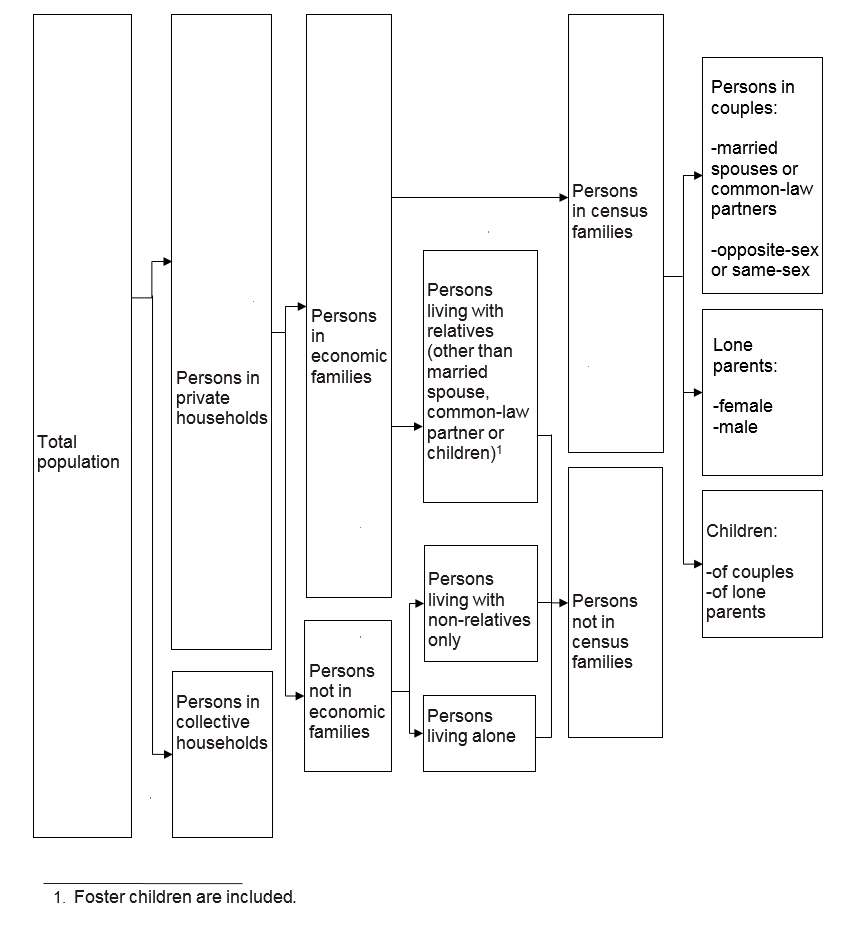Dictionary, Census of Population, 2016
Figure 3.1
Family membership and family status

Description of Figure 3.1
Figure 3.1 presents how the population covered in the Census is separated for production and dissemination purposes. The total population is broken down into either persons in private households or persons in collective households. Persons in private households are further broken down as persons in economic families or persons not in economic families.
Persons in economic families may also include persons in census families which can be broken down by persons in couples (married spouses or common-law partners, opposite-sex or same sex couples); female or male lone parents; children of couples or children of lone parents.
Persons in economic families may also include persons living with relatives (other than married spouse, common-law partner or children of which foster children are included).
Persons not in economic families include those persons living with non-relatives only or persons living alone. Persons living with relatives (other than married spouse, common-law partner or children [of which foster children are included]); those persons living with non-relatives only or persons living alone are all considered to be persons not in census families.
Source: Statistics Canada, Census of Population, 2016.
- Date modified:
